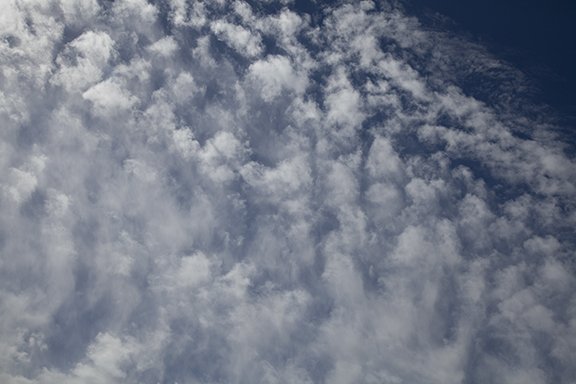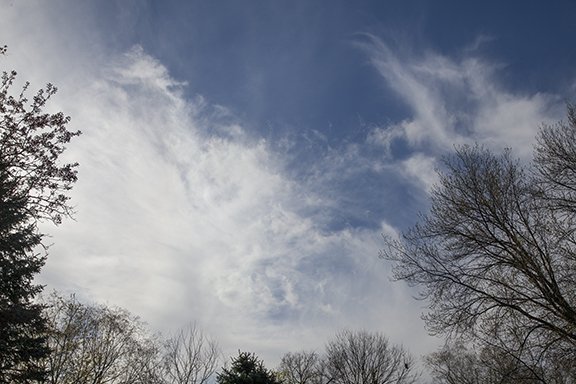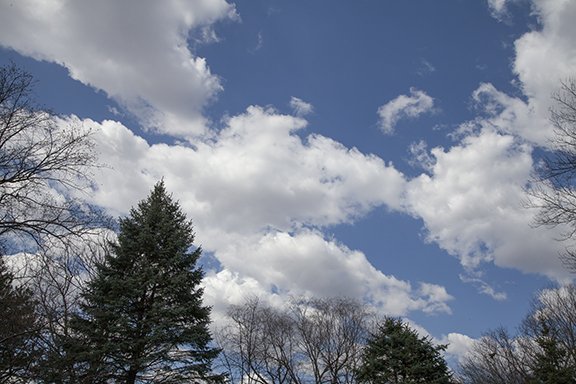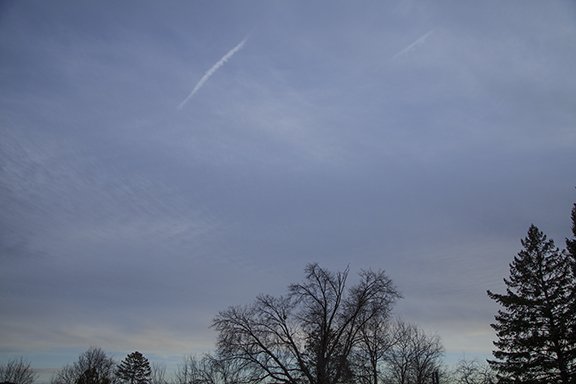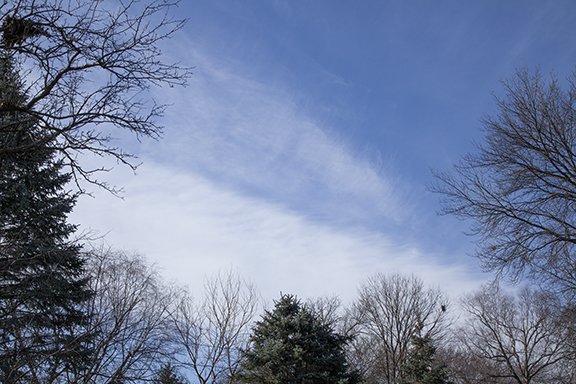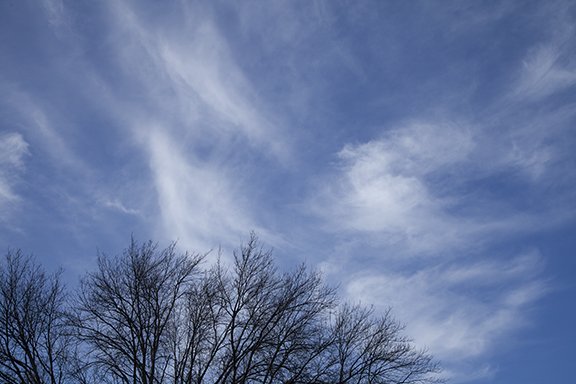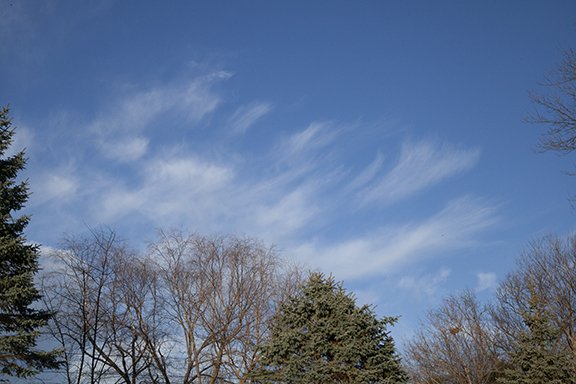This photo was taken just before sunrise. It shows the stages of lighting the horizon goes through before the Sun rises above the horizon. Notice the banding that occurs from overhead down to the horizon. The darker band across the top is the remnants of the Earth’s shadow that we are leaving.
The photo looks east into the direction the Earth is rotating. The Earth is rotating toward the Sun which is located below the horizon in the brightest part of the sky in the lower left. The next band of light below the Earth’s shadow is white because the sunlight is being scattered evenly. All the visible colors are scattered roughly in the same amount.
The coloration gradually turns more reddish near the horizon because the light reaching our eyes is traveling a greater distance through the atmosphere. Due to the longer path most of the colors, except the longer red wavelengths, are screened out by the molecules of air and particles in the air. The longer wavelength of red is not screened as much of the shorter wavelengths of the other colors.







